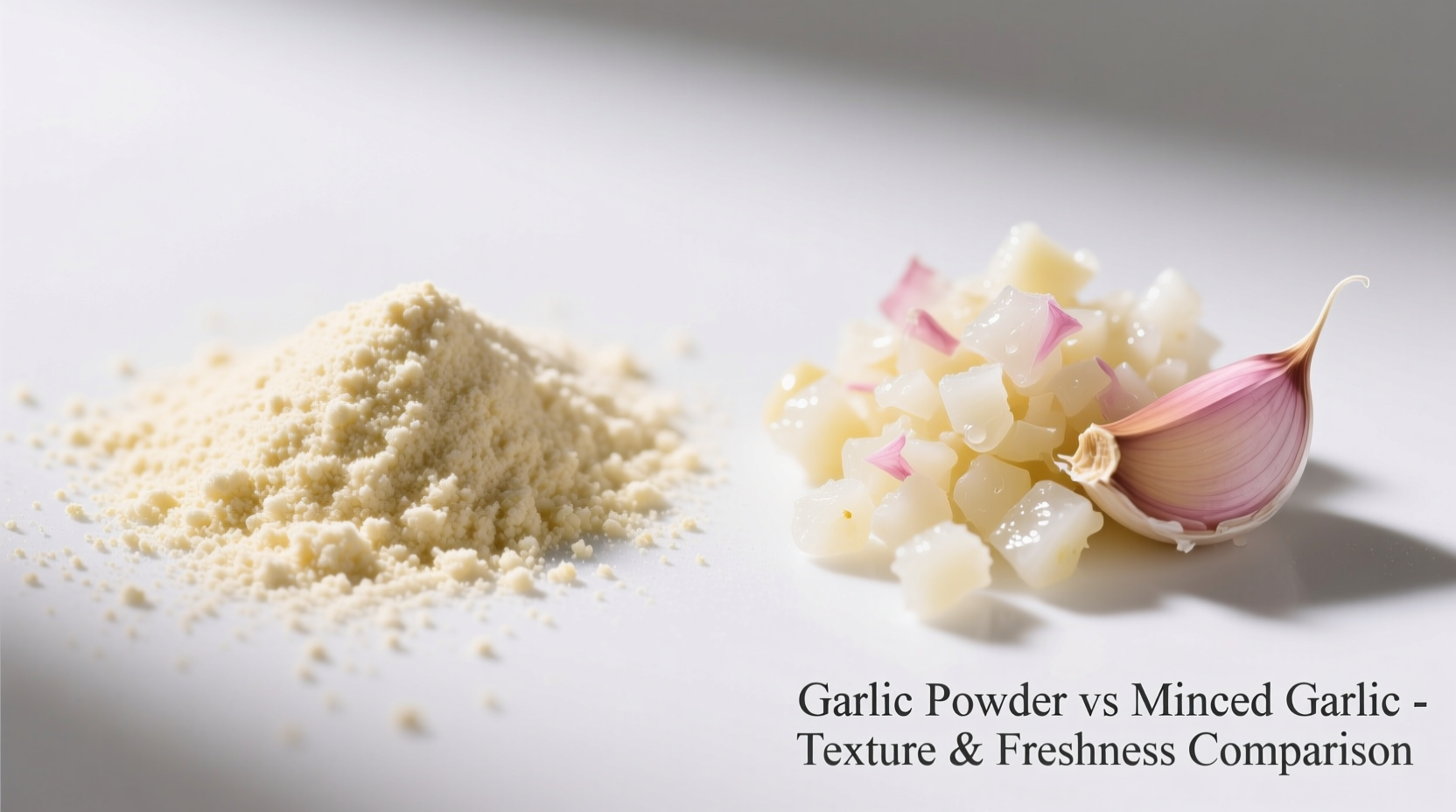Why Your Garlic Choice Matters in Cooking
Understanding the fundamental differences between garlic powder and minced garlic transforms your cooking results. While both originate from the same bulb, their processing methods create distinct chemical compositions that interact differently with ingredients. Garlic powder undergoes dehydration that converts alliin into thiosulfinates, producing a mellower, more uniform flavor. Minced garlic retains allicin—the compound responsible for fresh garlic's sharp bite—which develops more complex flavor notes when exposed to heat.
Flavor Chemistry Comparison
The transformation from fresh garlic to powder alters its biochemical profile significantly. When garlic cloves are crushed or minced, the enzyme alliinase converts alliin into allicin, creating that characteristic pungency. Powdered garlic has already undergone this reaction during processing, resulting in pre-formed flavor compounds that deliver immediate but less dynamic taste.
| Characteristic | Garlic Powder | Minced Garlic |
|---|---|---|
| Flavor Intensity | Milder (1/3 the potency) | Strong, complex |
| Shelf Life | 2-3 years (stable) | 1-2 weeks refrigerated |
| Best Cooking Method | Dry applications, long simmering | Raw applications, quick sautéing |
| Flavor Development | Immediate but static | Evolves with cooking time |
When to Choose Garlic Powder
Garlic powder excels in applications where even distribution and shelf stability matter most. According to the USDA Agricultural Research Service Spice Compendium, powdered garlic maintains consistent flavor compounds that withstand prolonged cooking without bitterness. Use it when:
- Creating dry spice rubs for meats (even distribution without burning)
- Adding garlic flavor to baked goods where moisture would disrupt texture
- Seasoning soups and stews that cook for hours (won't become bitter)
- When traveling or camping with limited refrigeration options
When Fresh Minced Garlic Shines
Minced garlic's volatile compounds create dynamic flavor development that powder can't replicate. The Journal of Food Science notes that fresh garlic's allicin content peaks within 10 minutes of mincing, creating optimal flavor complexity. Choose minced garlic for:
- Vinaigrettes and cold sauces (raw application preserves bright flavor)
- Quick-cooking stir-fries (30-60 second sauté develops sweetness)
- Garlic bread and finishing oils (fresh aroma remains pronounced)
- Recipes where garlic should be a featured flavor component

Precise Substitution Guidelines
Substituting between forms requires understanding their concentration differences. Professional chefs at the Culinary Institute of America recommend these ratios based on flavor compound analysis:
- 1 clove fresh garlic = 1/2 teaspoon minced garlic = 1/8 teaspoon garlic powder
- For delicate dishes (fish, light sauces): use 1/16 teaspoon powder per clove
- For robust dishes (stews, braises): use 3/16 teaspoon powder per clove
Always add garlic powder early in cooking to allow flavors to bloom, while minced garlic should join the pan 30-60 seconds before other aromatics to prevent burning.
Cooking Technique Considerations
The cooking method dramatically affects which garlic form performs best. In high-heat applications above 325°F (163°C), minced garlic burns quickly while powder integrates smoothly. For sous vide cooking, minced garlic develops more complex flavors during the extended low-temperature process. When making garlic-infused oils, minced garlic provides superior flavor extraction compared to powder, which can create sediment.
Storage and Shelf Life Reality Check
Garlic powder maintains flavor stability for 24-36 months when stored in airtight containers away from light, according to FDA food safety guidelines. Minced garlic in jars typically lasts 18-24 months unopened but degrades to 1-2 weeks after opening. Freshly minced garlic reaches peak flavor at 10 minutes post-mincing then gradually loses complexity over 24 hours. Never freeze minced garlic—it damages cell structure and creates off-flavors.
Professional Chef Recommendations
Top chefs employ strategic combinations of both forms for layered flavor. Thomas Keller's team at The French Laundry uses garlic powder in dry brines for even seasoning penetration, then finishes with fresh minced garlic for aromatic complexity. For weeknight cooking, combine 1/4 teaspoon powder with 1 clove minced garlic in pasta sauces—this creates depth while ensuring garlic flavor survives the cooking process.
Common Mistakes to Avoid
Cooking failures often stem from mismatched garlic forms. Adding minced garlic to slow cooker recipes results in bitter, acrid flavors as allicin breaks down over time. Using garlic powder in aioli creates a flat, one-dimensional taste without the fresh garlic's bright notes. When making garlic butter, always use fresh minced garlic—powder won't emulsify properly and creates graininess.











 浙公网安备
33010002000092号
浙公网安备
33010002000092号 浙B2-20120091-4
浙B2-20120091-4